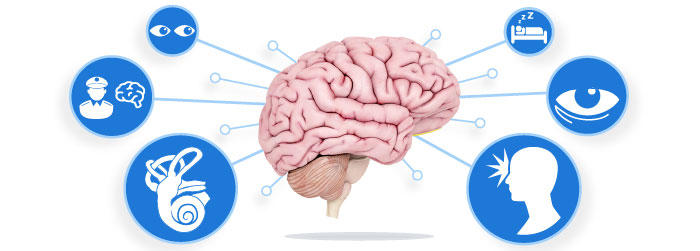Concussions and Symptom Variability

As clinicians, we are used to dealing with conditions that present with traditional symptom profiles that we can anticipate. Right hemisphere stroke? Look out for left neglect and hemiparesis. Left hemisphere stroke? Word finding difficulties and a field cut are prime candidates. Hip replacement? Break out the hip kits for self-care and grab the gait belts because it’s out the hallway to make tracks to the nurses’ station and back. However, all of that predictability goes out the window with a concussion.
A concussion patient can appear to have symptoms from a number of different conditions, with some symptoms presenting like a severe neurological injury, some appearing to be psychiatric in nature, and yet others appearing to belong to preexisting conditions. In addition to these confusing clinical signals, the amount of variability from one patient to another can be substantial!
The 11 most common concussion symptoms can be grouped in three categories:
- Physical: Vestibular, oculomotor, headache, fatigue, and sleep disorders.
- Cognitive: Impaired attention, memory, and executive function.
- Emotion: Low frustration tolerance, anxiety, and depression.
It is unusual (but not impossible) for ALL of the 11 most common symptoms from concussion to be present in a single patient. However, profiles consisting of 4, 5, or 6 symptoms scattered across physical, cognitive, and emotional clusters of symptoms are the norm in a patient with post-concussion syndrome in the chronic stage of the injury. Understanding “the how and the why” behind this variability in symptom presentation is the key to successfully working with this challenging yet rewarding population.









